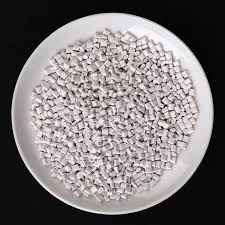Pentoxifylline for Intermittent Claudication An Overview
Intermittent claudication (IC) is a condition characterized by muscle pain, typically in the legs, that occurs during physical activity such as walking, and is relieved by rest. It is predominantly caused by peripheral artery disease (PAD), where narrowed arteries reduce blood flow to the limbs. The pain can significantly impair the quality of life and hinder daily activities. While lifestyle changes such as supervised exercise therapy and smoking cessation are critical in managing IC, pharmacological interventions are also essential for many patients. One of the medications that have gained attention in this context is pentoxifylline.
What is Pentoxifylline?
Pentoxifylline is a methylxanthine derivative that has been used primarily as a hemorheologic agent. It works by improving blood flow through the microcirculation and increasing the flexibility of red blood cells. This action helps to enhance oxygen delivery to tissues, which is crucial for patients suffering from conditions like IC. Initially developed to treat vascular disorders such as peripheral vascular disease, pentoxifylline has since been explored for its efficacy in alleviating the symptoms of IC.
Mechanism of Action
The therapeutic effects of pentoxifylline can be attributed to several mechanisms. Firstly, it reduces blood viscosity, which facilitates better blood flow. Secondly, it inhibits platelet aggregation, preventing clots that can restrict blood flow. Thirdly, it possesses anti-inflammatory properties, which may mitigate the vascular inflammation often seen in patients with PAD. Collectively, these effects contribute to its potential efficacy in improving exercise tolerance and reducing pain during physical activity in individuals with intermittent claudication.
Clinical Evidence and Efficacy
pentoxifylline for intermittent claudication

Numerous studies and clinical trials have explored the effectiveness of pentoxifylline in treating IC. A systematic review of randomized controlled trials has shown that pentoxifylline can significantly improve walking distance and reduce claudication pain compared to placebo. A meta-analysis indicated that patients receiving pentoxifylline experienced longer pain-free walking times than those on standard care. These findings are particularly relevant for individuals who may not be candidates for surgical interventions, such as angioplasty or bypass surgery.
However, while pentoxifylline appears to be a beneficial adjunctive therapy for IC, its effects may not be as pronounced as some other options, such as cilostazol, which is often considered the first-line medication for this condition. Therefore, clinicians should carefully evaluate treatment plans on a case-by-case basis.
Safety and Tolerability
Pentoxifylline is generally well tolerated, with side effects being relatively mild and including gastrointestinal issues like nausea, diarrhea, and abdominal discomfort. More severe adverse effects are rare but can include hypotension and allergic reactions. Nonetheless, it is essential for patients to discuss their overall health and any existing conditions with their healthcare provider before starting treatment.
Conclusion
Pentoxifylline represents a valuable addition to the arsenal of treatment options available for patients suffering from intermittent claudication. While it may not replace first-line therapies such as cilostazol, it offers a relatively safe and effective alternative, particularly for patients who cannot tolerate or access other treatments. Importantly, the management of IC often requires a multifaceted approach, integrating pharmacological interventions, lifestyle modifications, and supervised exercise programs. As research continues, further insights into the role of pentoxifylline and similar medications will undoubtedly evolve, potentially leading to improved outcomes for individuals with peripheral artery disease, enhancing their quality of life, and allowing them to maintain an active lifestyle.
In summary, for those struggling with the debilitating effects of intermittent claudication, pentoxifylline may provide a glimmer of hope and an improved pathway to a more active and fulfilling life.

